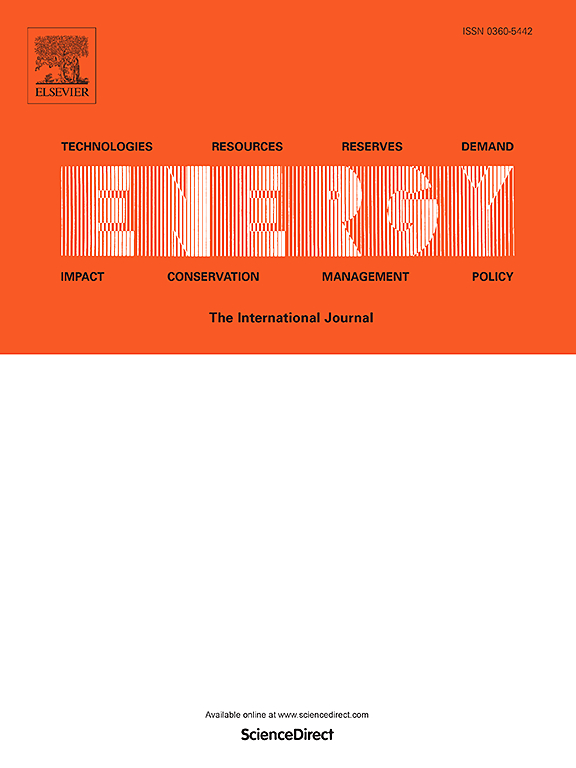研究温度对油页岩超临界甲醇分解转化的影响:实验、表征和机理洞察
IF 9
1区 工程技术
Q1 ENERGY & FUELS
引用次数: 0
摘要
本研究对中国北漂(BP)和约旦EL - lajjun (EL)油页岩进行了不同温度下的超临界甲醇分解实验。对油页岩超临界甲醇分解过程中甲醇可溶部分(SP)、不溶渣油(ISR)和气体进行了收集和分析,揭示了油页岩超临界甲醇分解的反应机理和温度效应。所得结果表明,油页岩超临界甲醇分解可实现轻度转化(<400℃)。甲醇的存在显著提高了SP的收率,超过了裂解得到的油页岩的页岩油收率。BP油页岩和EL油页岩在370°C时SP收率分别为5.33%和14.43%。结果表明,SPs的主要成分为正构烷烃和脂肪酸甲酯(FAME)。此外,对超临界甲醇分解过程中在不同温度下获得的产物进行了综合表征,确定了11种可能的化学反应。这些结果阐明了温度对甲醇分解产物分子组成和结构的影响,揭示了油页岩超临界甲醇分解的反应机理,验证了该工艺生产液体燃料的可行性。本文章由计算机程序翻译,如有差异,请以英文原文为准。
Investigating the impact of temperature on oil shale conversion via supercritical methanolysis: Experimentation, characterization and mechanism insight
In this study, supercritical methanolysis experiments were conducted for Chinese Beipiao (BP) and Jordanian El-Lajjun (EL) oil shales at various temperatures. The methanol-soluble portion (SP), insoluble residue (ISR), and gas were collected and analyzed, revealing the reaction mechanisms and temperature effects in oil shale supercritical methanolysis. The obtained results demonstrated that supercritical methanolysis of oil shale could achieve a mild conversion (<400 °C). The presence of methanol significantly enhanced the SP yield, exceeding the shale oil yield from oil shale obtained from pyrolysis. Maximum SP yields of 5.33 % and 14.43 % for BP oil shale and EL oil shale, respectively, at 370 °C. The results showed that the primary components of the SPs were n-alkanes and fatty acid methyl esters (FAME). Additionally, a comprehensive characterization of the products obtained at various temperatures during supercritical methanolysis identified 11 possible chemical reactions. These results elucidated how temperature influences the molecular composition and structure of methanolysis products, revealed the reaction mechanism underlying oil shale's supercritical methanolysis, and verified the feasibility of producing liquid fuels through this process.
求助全文
通过发布文献求助,成功后即可免费获取论文全文。
去求助
来源期刊

Energy
工程技术-能源与燃料
CiteScore
15.30
自引率
14.40%
发文量
0
审稿时长
14.2 weeks
期刊介绍:
Energy is a multidisciplinary, international journal that publishes research and analysis in the field of energy engineering. Our aim is to become a leading peer-reviewed platform and a trusted source of information for energy-related topics.
The journal covers a range of areas including mechanical engineering, thermal sciences, and energy analysis. We are particularly interested in research on energy modelling, prediction, integrated energy systems, planning, and management.
Additionally, we welcome papers on energy conservation, efficiency, biomass and bioenergy, renewable energy, electricity supply and demand, energy storage, buildings, and economic and policy issues. These topics should align with our broader multidisciplinary focus.
 求助内容:
求助内容: 应助结果提醒方式:
应助结果提醒方式:


